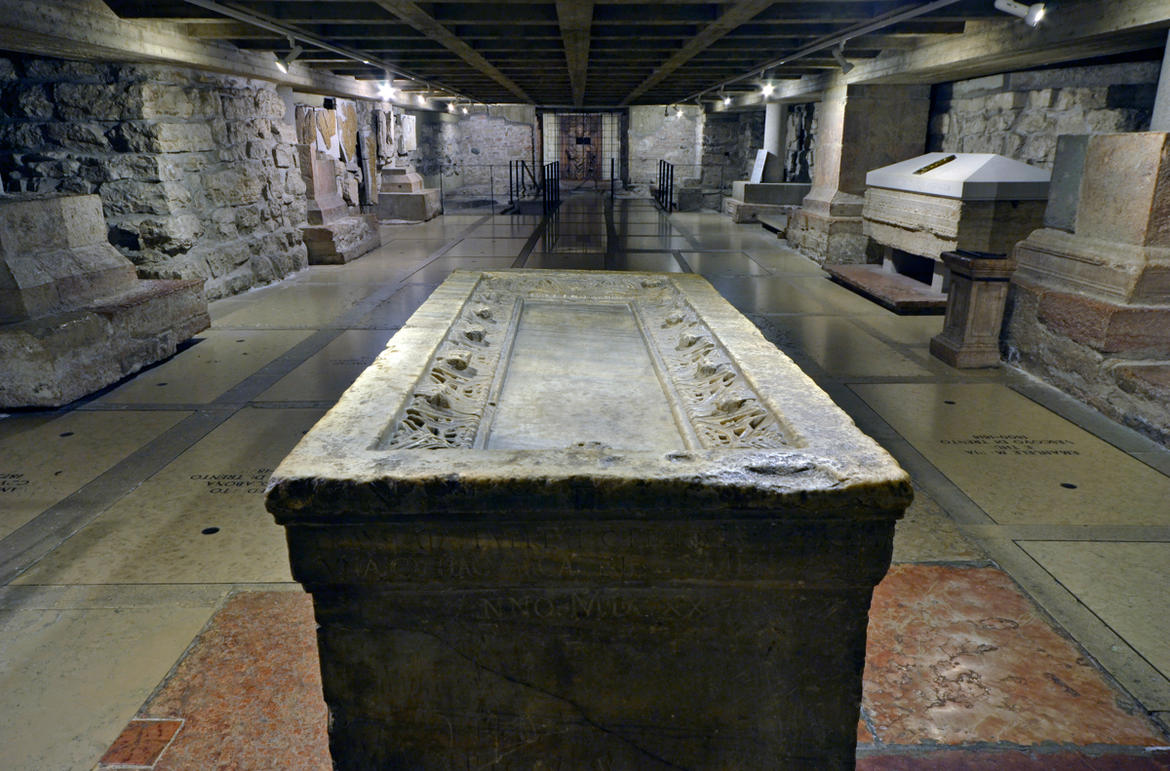Early Christian Basilica of Saint Vigilius - Trento
This ancient house of worship was from the beginning a cemetery basilica, that is to say a shrine with an essentially commemorative function. When the palatium episcopatus (bishop’s palace) was transferred to the immediate vicinity between the ninth and tenth centuries, this building assumed the function of cathedral church.

Excavations carried out from 1964 to 1977 have brought to light the remains of the Early Christian basilica of Saint Vigilius, built outside the city walls presumably around the end of the fourth century using sections of walls of earlier secular buildings. The structure’s original purpose was as a burial place for the missionaries in Anaunia Sisinius, Martyrius, and Alexander, murdered in the Val di Non by pagans on 29 May 397. Alongside the martyrs Vigilius, the third bishop and the patron saint of Trent was also buried. This ancient house of worship was from the beginning a cemetery basilica, that is to say a shrine with an essentially commemorative function. When the palatium episcopatus (bishop’s palace) was transferred to the immediate vicinity between the ninth and tenth centuries, this building assumed the function of cathedral church. True to the classic shape of Early Christian basilicas, it had an atrium, or perhaps a four-sided porch attached to the front wall, which was pierced by three doors, the central one of which is still functioning. The ancient basilica was about 43 meters long and 14 meters wide, a fairly large size for a hall church. It probably had a trussed roof. The floor was completely taken up by tombs set into the ground, all converging towards that of the patron saint. Fragments have been found of a mosaic floor decoration near the chancel, marked off by a step made of red stone still showing the square cavities into which were set the little pillars supporting the pluteus. In the ninth century two side chapels with apses were added. In the eleventh century the single large space was divided into a nave and two side aisles and a crypt was dug out underneath, causing the chancel area to be raised. The final work on the building was concluded by Bishop Alemanno, who on 18 November 1145 reconsecrated the church in the presence of the Patriarch of Aquileia.
The Early Christian Basilica is in the underground of St. Vigilius' cathedral. The archaeological site is accessible at the end of the left aisle, but not for disabled people.
organized by Museo Diocesano Tridentino

